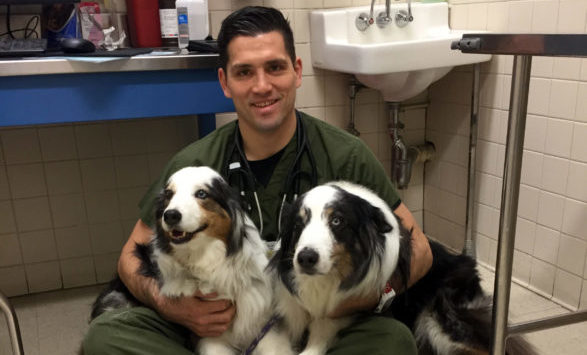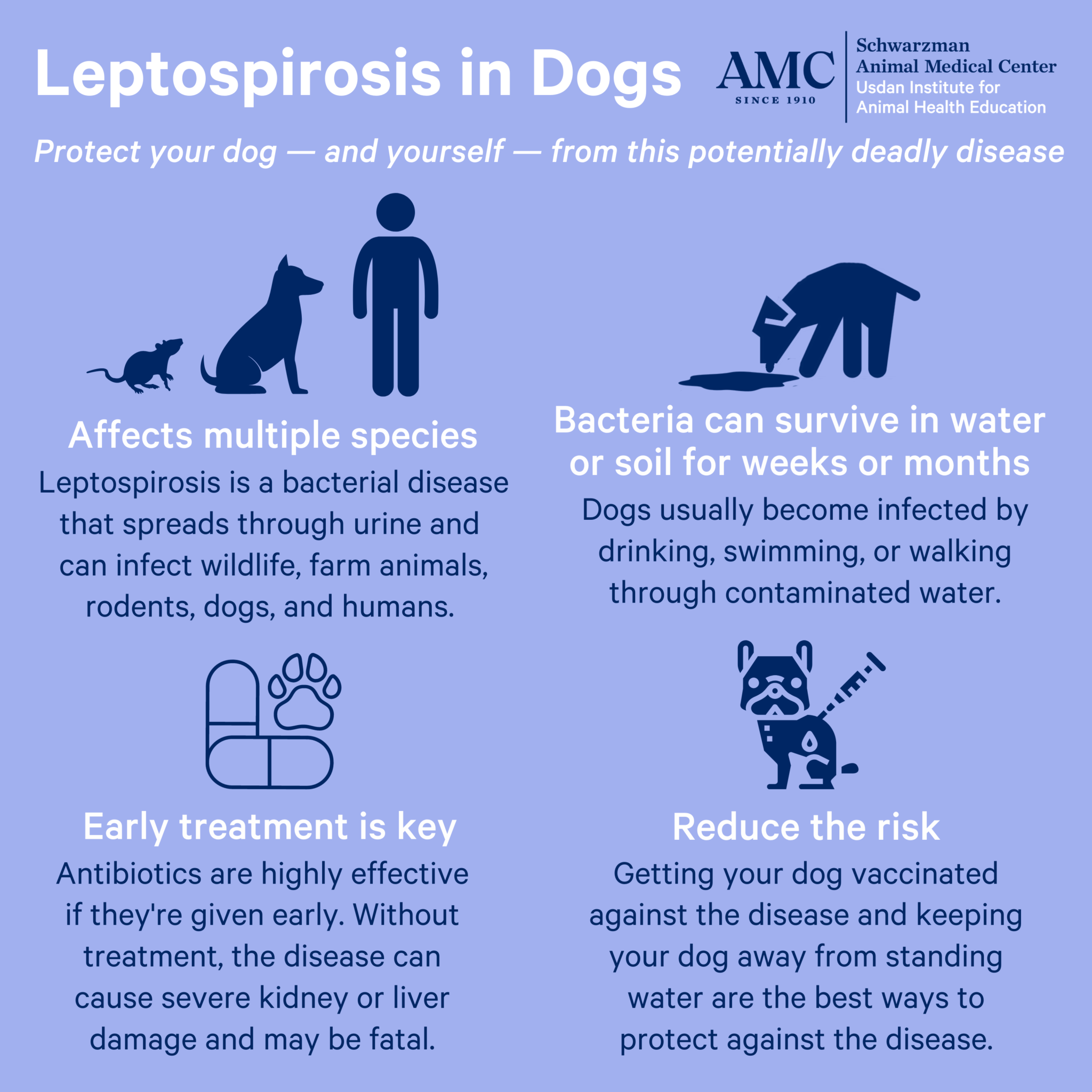Leptospirosis in Dogs: Causes, Treatment, and Prevention

Background
Leptospirosis, commonly known as “lepto,” is a contagious, bacterial disease that can cause serious damage to the kidney and/or liver. The bacteria that cause leptospirosis are spread through the urine of infected animals, which can get into water or soil and survive there for weeks or months.
Dogs contract leptospirosis when the bacteria enter the body through skin or mucous membranes (eyes, nose, or mouth), especially if the skin is broken from a cut or scratch. Drinking contaminated water can also cause infection, and the disease can be passed from a mother dog to her puppies through the placenta.
Leptospirosis is a zoonotic disease, meaning it can be transmitted from animals to humans. In humans, leptospirosis can cause flu-like symptoms and may lead to liver or acute kidney injury.
Risk Factors
Risk factors include swimming in or drinking from contaminated streams lakes, and puddles; exposure to wildlife or farm animals, and contact with infected animals or their urine.
While it was once seen mostly in rural areas, leptospirosis is becoming increasingly common in urban and suburban areas as well. Dogs who play in or near mud or puddles are at an especially high risk for leptospirosis.
Signs
The following are common in dogs with clinical signs, although many dogs show no signs at all:
- Lethargy
- Increased thirst
- Vomiting
- Loss of appetite
- Fever
- Jaundice (yellow discoloration of skin)
- Discolored urine (dark yellow to orange)
- Joint or muscle pain
If your dog is showing any of these signs, see your veterinarian immediately, because leptospirosis is one of several serious diseases that can cause these clinical signs. Delaying treatment can lead to severe kidney or liver damage — and may be fatal.
Diagnosis
Leptospirosis is diagnosed based on exposure history, clinical examination, and diagnostic testing. The microscopic agglutination test (MAT), a cage side test, and the PCR test are commonly used to diagnose the disease. The MAT is performed in a specialized laboratory and looks for antibodies in the blood. Since antibodies may not show up early in the illness, the MAT test may need to be repeated to confirm a diagnosis. The cage side test is performed in the clinic using a drop of blood. Because the results are available in minutes, a positive test results helps direct treatment. The PCR test is also performed in a specialized laboratory and looks for the DNA of leptospira bacteria in the blood and urine. In some situations, all three tests will be performed to confirm a diagnosis.
Treatment
If it’s caught early, antibiotics are very effective for treating leptospirosis. However, if there is already severe damage to the dog’s liver or kidneys, the dog may need to be hospitalized for supportive care with intravenous fluids. Hemodialysis may be required to replace the normal function of the kidneys while antibiotics clear up the infection. Long-term liver or kidney disease may persist, even with appropriate treatment.
Prevention
Getting your dog vaccinated against leptospirosis and keeping them up to date on vaccine boosters can help protect your dog. However, the vaccine is only effective against certain strains, so it’s also important to keep your dog away from wild animals and to discourage drinking from or playing in streams, lakes, ponds, and puddles. When taking long walks, be sure to bring along fresh water for your dog, so they are not tempted to drink from potentially contaminated water sources. If your dog is sick and showing clinical signs consistent with leptospirosis, be sure to inform your veterinarian if your dog has been near wildlife or standing water.
If you are caring for a dog with leptospirosis, it’s important to wear gloves to avoid infection.
Make an Appointment

Internal Medicine
AMC's board-certified specialists in Internal Medicine treat small animal pets in specialty areas, such as: endocrinology, gastroenterology, hematology, immune-mediated disease, infectious disease, nephrology, reproductive medicine, respiratory medicine, and more.
Learn More






























